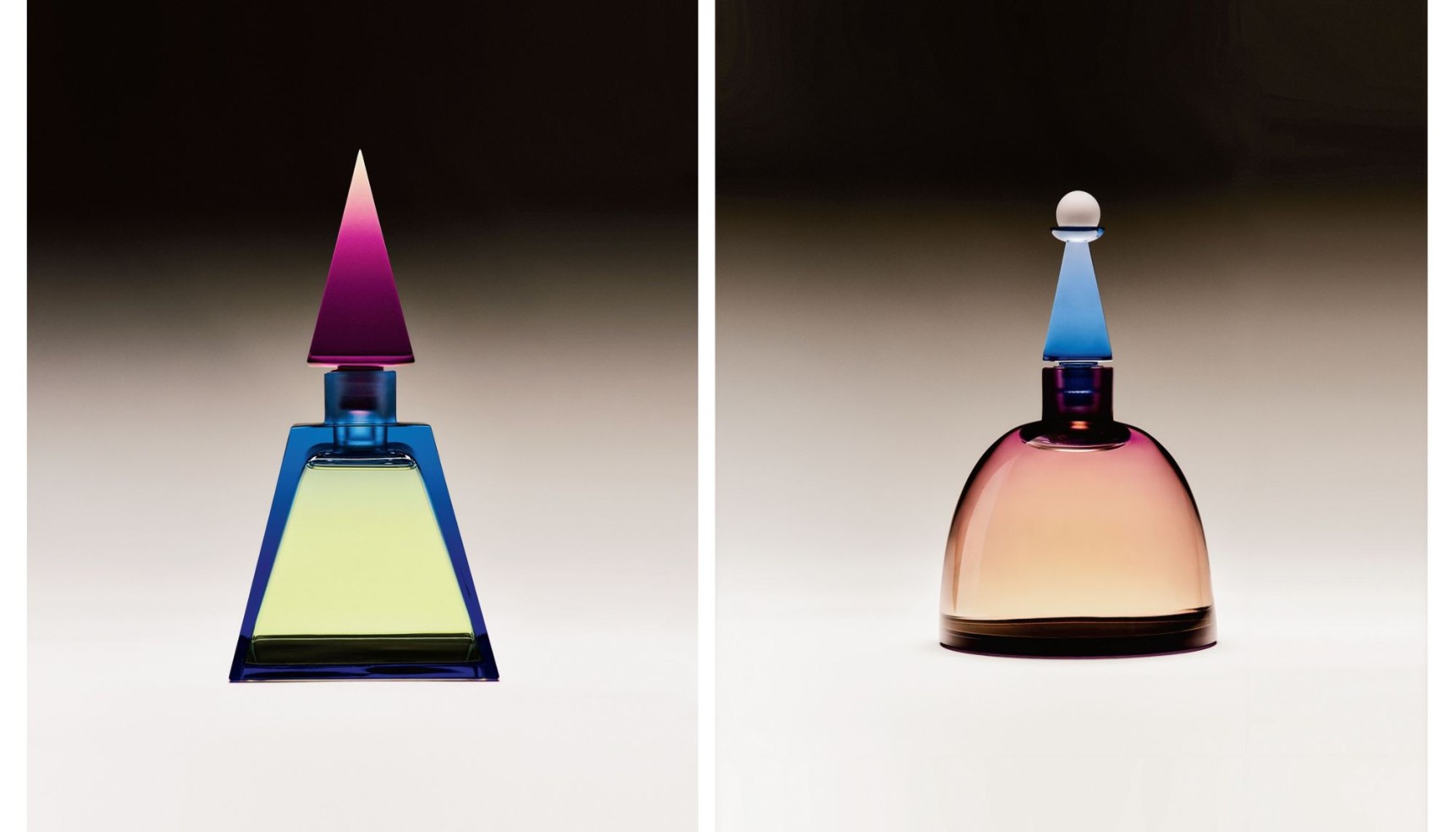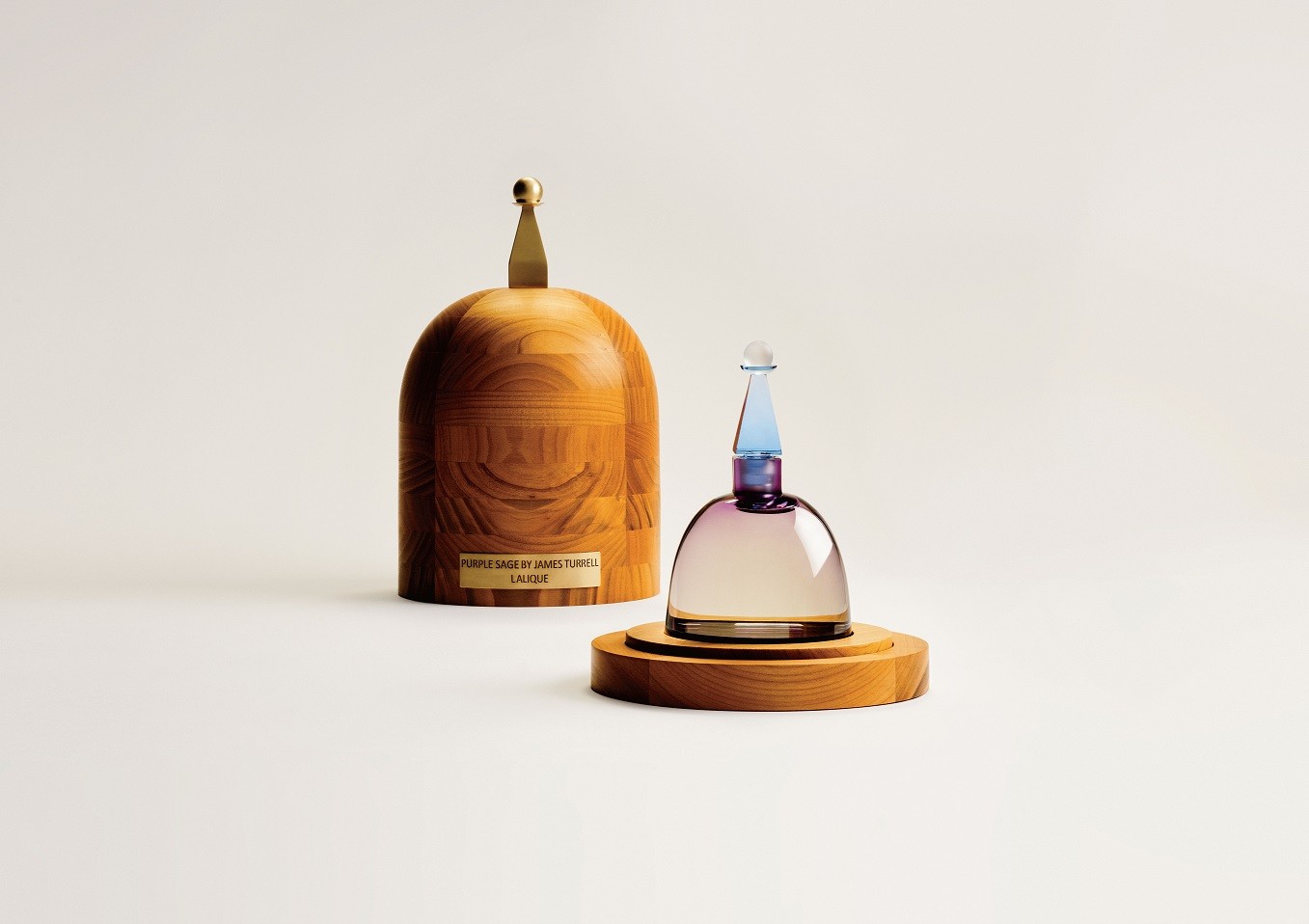The keepsake vessels, available in extremely limited editions (only 100 each), take architectural inspiration from pyramids and stupas—structures of “high spiritual value in which light plays an essential role,” as Turrell put it.
That concept translates into modern, geometric vials of tinted Lalique crystal, a luminous showcase for the nectar inside. “They are in fact prisms,” explains Silvio Denz, Chairman of the Board of Directors and CEO of Lalique SA.
Sleek and deceptively simple-looking, the shapes proved exceptionally tricky to produce—they’re entirely handmade—but not impossible for the artisans at Lalique’s only atelier, tucked away in the small French village of Wingen-sur-Moder. It’s here that founder René Lalique lit the factory’s first glassworks furnace more than a century ago. The artisanal techniques haven’t changed in all that time, from the shaping of raw materials by fire to the meticulous polishing by hand.
Turrell was so fascinated by the crystal craftsmanship, he felt compelled to spin off a second art concept for Lalique: Crystal Light, a light panel with a trompe-l’oeil design of elliptical rings, which ripple hypnotically with color. Only 42 pieces were made. The light panel is also a nod to one of his most famous works, Aten Reign (2013), the site-specific Skyspace created for the Guggenheim in New York.
But Turrell’s most intriguing move in the Lalique collaboration was his foray into a whole new medium: scent. He gave creative direction to not only the bottle design but also the fragrance itself, working with master perfumer Barbara Zoebelein of Givaudan. And if the bottles reflect his professional preoccupation with light, the scents reveal a more emotional, personal side.
“It’s a very nostalgic project,” recalls Zoebelein. “James wanted, of course, Arizona elements to be reflected.” Specifically, Turrell was beguiled by the notes of purple sage and old rubbed leather—redolent of his homeland, the American West. These were the scents that would cling to his chaps when he and his wife, contemporary artist Kyung-Lim Lee, returned to their ranch after long horseback rides through the desert dreamscape.






